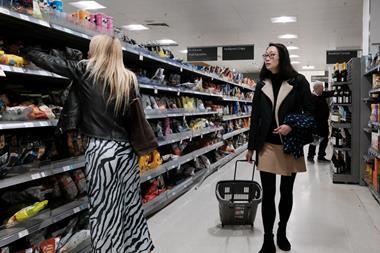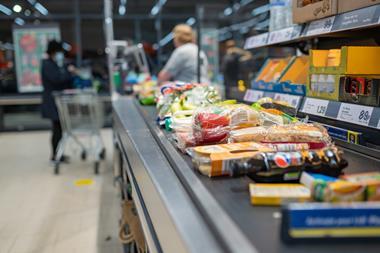Inflation is “likely to have peaked” during the first week of April, despite continuing to reach record highs in some categories, according to the latest figures from the BRC-Nielsen Shop Price Index.
Shop price inflation decreased to 8.8% in the first week of April, down from 8.9% in March, but continued to exceed the three-month average of 8.7%.
Food price inflation reached the “highest inflation rate in the food category on record”, soaring to 15.7% in the week to April 7, up from 15% in the previous month. This also surpassed the three-month average rate of 15.1%.
Fresh food inflation also jumped to a record high, reaching 17.8% during the period, up from 17% in March, and exceeding the three-month average of 17%.
Ambient food inflation rose to 12.9% in April, up from 12.4% in March – also hitting a record high.
Non-food inflation “remains elevated” but decreased to 5.5% from 5.9% in the previous month. This was lower than the three-month average rate of 5.6%.
BRC chief executive Helen Dickinson said: “Overall shop price inflation eased slightly in April due to heavy spring discounting in clothing, footwear and furniture.
“However, food prices remained elevated given ongoing cost pressures throughout the supply chain. The knock-on effect from increased production and packaging costs meant that ready meals became more expensive and coffee prices were also up due to the high cost of coffee beans, as well as key producer nations exporting less.
“Meanwhile, the price of butter and vegetable oils started to come down as retailers passed on cost savings from further up the supply chain.
“We should start to see food prices come down in the coming months as the cut to wholesale prices and other cost pressures filter through. In the meantime, retailers remain committed to helping their customers and keeping prices as low as possible.
“The government must also help by minimising the impact of oncoming regulatory burdens as these will hold back investment and ultimately contribute to ongoing high prices for already-squeezed households.”


























No comments yet